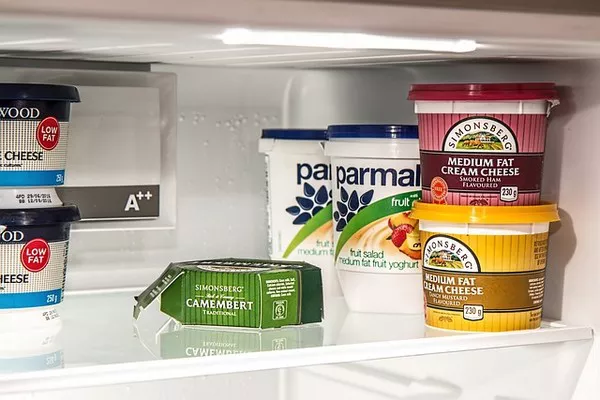Refrigeration systems are critical in various applications, from residential air conditioning units to large-scale industrial cooling systems. However, like any mechanical system, they are prone to issues, one of the most common being overcharging. An overcharged refrigeration system can lead to reduced efficiency, increased wear and tear, and even system failure. This article provides a detailed, step-by-step guide on diagnosing and fixing an overcharged refrigeration system, ensuring your system operates at peak performance and longevity.
Understanding Refrigerant Overcharge
Refrigerant overcharge occurs when there is more refrigerant in the system than it can effectively handle. This imbalance can result in several problems, including:
Increased System Pressure: Excess refrigerant raises the pressure within the system, which can damage components like the compressor.
Reduced Cooling Efficiency: Too much refrigerant can cause suboptimal heat exchange, reducing the system’s ability to cool effectively.
Increased Energy Consumption: An overcharged system requires more energy to operate, leading to higher utility bills.
Component Damage: Prolonged overcharge can lead to issues like compressor failure, which can be costly to repair.
Diagnosing an Overcharged Refrigeration System
Before attempting to fix an overcharged system, it’s crucial to accurately diagnose the problem. Here are some common symptoms and diagnostic methods:
High Discharge Pressure: Use a pressure gauge to measure the system’s discharge pressure. Consistently high readings can indicate an overcharge.
High Subcooling: Measure the subcooling temperature (the temperature difference between the refrigerant’s liquid line and its saturation temperature). Higher than normal subcooling temperatures suggest excess refrigerant.
Compressor Noise: Listen for unusual noises from the compressor. Overcharge can cause the compressor to work harder, leading to noise and potential damage.
Poor Cooling Performance: If the system isn’t cooling as effectively as it should, despite being otherwise functional, overcharging might be the cause.
Ice Formation: Check for ice on the evaporator coil. Excess refrigerant can cause low temperature in certain sections, leading to ice formation.
Steps to Fix an Overcharged Refrigeration System
Once you have confirmed that the system is overcharged, follow these steps to correct the issue:
1. Safety Precautions
Before beginning any work on the refrigeration system, ensure you have the appropriate safety equipment, including gloves and safety glasses. Working with refrigerants can be hazardous, and proper safety measures are essential.
2. Shut Down the System
Turn off the refrigeration system to prevent any accidents during the repair process. Ensure that the power supply is disconnected to avoid electrical hazards.
3. Gather Necessary Tools
You’ll need several tools to fix an overcharged system, including:
- Refrigerant recovery machine
- Manifold gauge set
- Refrigerant storage tank
- Thermometer
- Protective gear
4. Connect the Manifold Gauge Set
Attach the manifold gauge set to the refrigeration system. Connect the low-pressure side of the gauge to the system’s suction line and the high-pressure side to the discharge line. This setup will help you monitor the system’s pressures during the recovery process.
5. Recover Excess Refrigerant
Using the refrigerant recovery machine, carefully recover the excess refrigerant from the system. Connect the machine to the manifold gauge set and follow the manufacturer’s instructions for safe refrigerant recovery. Ensure that the recovered refrigerant is stored in an appropriate storage tank.
6. Monitor System Pressure
As you recover the refrigerant, continuously monitor the system’s pressure using the manifold gauge set. Stop the recovery process when the pressure readings return to normal operating levels. Refer to the system’s manual for the recommended pressure levels.
7. Check Subcooling and Superheat
After recovering the excess refrigerant, check the subcooling and superheat levels. Adjust the refrigerant charge as necessary to achieve optimal subcooling (typically between 10-15°F) and superheat (usually between 8-12°F) levels. These values ensure efficient system operation.
8. Test the System
Once the refrigerant levels are adjusted, restart the refrigeration system and let it run for a few minutes. Observe the system’s performance, checking for any signs of abnormal operation, such as unusual noises or poor cooling efficiency.
9. Fine-Tune the Refrigerant Charge
If necessary, fine-tune the refrigerant charge by adding or removing small amounts of refrigerant. Use the manifold gauge set to monitor the pressure and temperature readings closely, ensuring the system operates within the recommended parameters.
10. Document the Process
Keep a detailed record of the steps taken during the repair process, including the amount of refrigerant recovered and added, pressure readings, and temperature measurements. This documentation can be useful for future reference and maintenance.
Preventive Measures
To avoid overcharging issues in the future, consider implementing these preventive measures:
Regular Maintenance: Schedule regular maintenance checks for your refrigeration system. This includes inspecting refrigerant levels, checking for leaks, and ensuring all components are functioning correctly.
Proper Training: Ensure that technicians working on the system are adequately trained in refrigerant handling and system diagnostics. Proper training can prevent overcharging and other related issues.
Accurate Refrigerant Charging: Always use accurate methods for refrigerant charging, such as weighing the refrigerant or using manufacturer-recommended charging charts. Avoid estimating or “eyeballing” the charge, as this can lead to overcharging.
Install Pressure Relief Valves: Consider installing pressure relief valves in the system to prevent excessive pressure buildup in case of overcharging. These valves can release excess refrigerant safely, protecting the system components.
See Also How Does a Condenser Function?
Conclusion
An overcharged refrigeration system can lead to numerous problems, from reduced efficiency to potential system failure. By accurately diagnosing the issue and following the proper steps to correct it, you can ensure your refrigeration system operates efficiently and reliably. Remember to prioritize safety throughout the process and consider implementing preventive measures to avoid future overcharging issues. With careful attention to detail and regular maintenance, you can keep your refrigeration system running smoothly and extend its lifespan.

